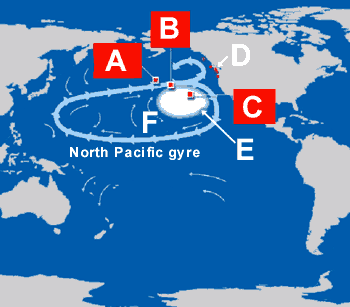Ocean Plastic Pollution -
A Viable Cleanup Solution
by Nancy Hearn, CNC
Note: As an Amazon Associate I earn from qualifying purchases.
For many years, ocean plastic pollution was an environmental crisis written off as a problem with no solution.
However, against all odds, young innovator Boyan Slat, currently CEO of The Ocean Cleanup at the age of 22, has developed a plan and the technology to remove ocean plastics.
Boyan’s plan is designed to clean up the major plastic pollution in the world’s oceans in just ten years. With the first prototype in place in the North Sea, I am optimistic that significant amounts of plastic will be removed from our oceans in the near future.
The Ocean Pollution Problem
Ocean plastic pollution is an ecologic disaster. According to the Ellen MacArthur Foundation, there will be more plastic than fish in the ocean by 2050—unless something changes drastically.
On a yearly basis, eight million tons of plastic are dumped into the oceans, and it gets worse every year.
Eight million tons is so vast, it’s hard to image. But it equates to about one garbage truck full of plastic being dumped into the ocean every minute.
Boyan says, “The ocean is the most important life-support system of our planet. It regulates the climate; it produces oxygen. The vast majority of biodiversity can be found in the ocean.”
The UN has determined that plastic pollution is one of the major environmental issues facing mankind in the 21st century.
Boyan's Story
In 2011, Boyan was vacationing with his family in Greece. While scuba diving, he was shocked to see more plastic than fish in the ocean.
Thus, at 16 years of age, Boyan determined to find a solution to the ocean plastic pollution problem.
His ideas first took shape as a school science project, and later while studying aerospace engineering at Delft University in Holland, he set up The Ocean Cleanup and gave a Tedx Talk on his idea.
To make a long story short, he was so confident in his design, he quit university and, after being turned down by hundreds of companies, managed to raise the $2 million needed to build the first prototype in 100 days.
Ocean Cleanup Solution
Boyan’s prototype, named Boomy McBoomface, is currently in place in the North Sea, where the ocean conditions are harsh.
However, the actual launch site is planned for the pollution collection region in the Pacific, which is referred to as the “Great Pacific Garbage Patch.”
Plastic pollution in the world’s oceans is carried by the currents and collected in five major water systems known as gyres.
The Great Pacific Garbage Patch is the worst gyre and contains nearly one-third of all oceanic plastic.
The Ocean Cleanup project is utilizing a V-shaped barrier that is stronger than steel and deeply anchored into the seabed to withstand extreme ocean conditions. It will allow the entire structure to move with the ocean waves without obstructing marine life.
Stop Using Plastic
As hopeful as the Ocean Cleanup project is, the best long-term solution for getting rid of ocean plastic pollution is for all of us to stop using plastic, especially bottled water.
Even though the use of plastic is a modern convenience, it comes with a high price of harm to our oceans, as well as our rivers, lakes and groundwater. And it’s not necessary since we have so many viable alternatives to plastics.
If nothing else, I hope you will consider making a decision this year to stop buying bottled water to reduce plastic waste.
One viable alternative to buying bottled water in plastic jugs or bottles is to purchase a whole house water filter system or a drinking water filter, along with stainless steel water bottles that you can refill and take with you on a daily basis.
In addition, if you do a cost analysis of investing in a home drinking water system versus buying bottled water, most families will save a lot of money over the duration of the water system, not to mention the convenience of having clean water at home for drinking and cooking.
Reference
The Guardian; More plastic than fish in the sea by 2050, says Ellen MacArthur; 2016.
Further reading . . .
Badplastics.com; Scary Facts and Figures about Plastics in Our Bodies and the Environment.
Return from Ocean Plastic Pollution to 7 Basic Types of Water Pollution
If you would like to reproduce or republish this article or any other article on this site, feel free to do so but please include a reference or link to the article at WaterBenefitsHealth.com.
Sign Up for Our Monthly
Newsletter
Visitor Comments
"This was the best and most straight forward info on the net yet. I asked a question and got an answer that made sense. Thank you so much!" - Linderlinder
FINALLY!!! I have been wondering about this for years with no 'solid' answer. This is exactly what I've been wanting to know! Thank you for this share..." by Andy
"Thank you for the information, Nancy. I appreciate it. Your article and findings are very helpful, referring to dehydration." - Carolyn
"Lemon water is one drink both my wife and I can't drink. It upsets our stomachs. We are in our sixties and in very good health—well, better health now that we drink about 2 liters plus of water each day. It has made so much difference to our digestive systems and recovery every day. Thank you for your website and effort." - Rod



